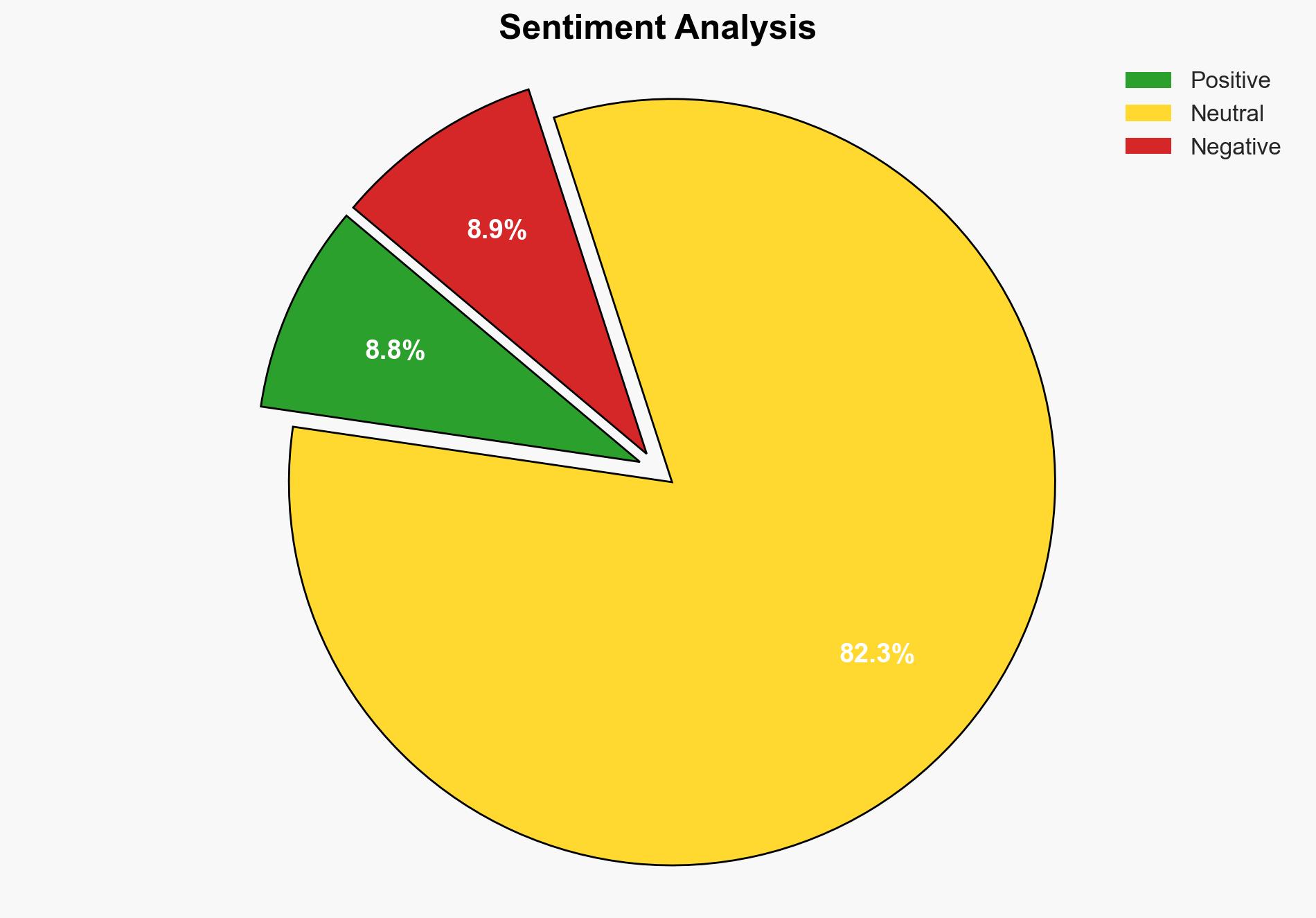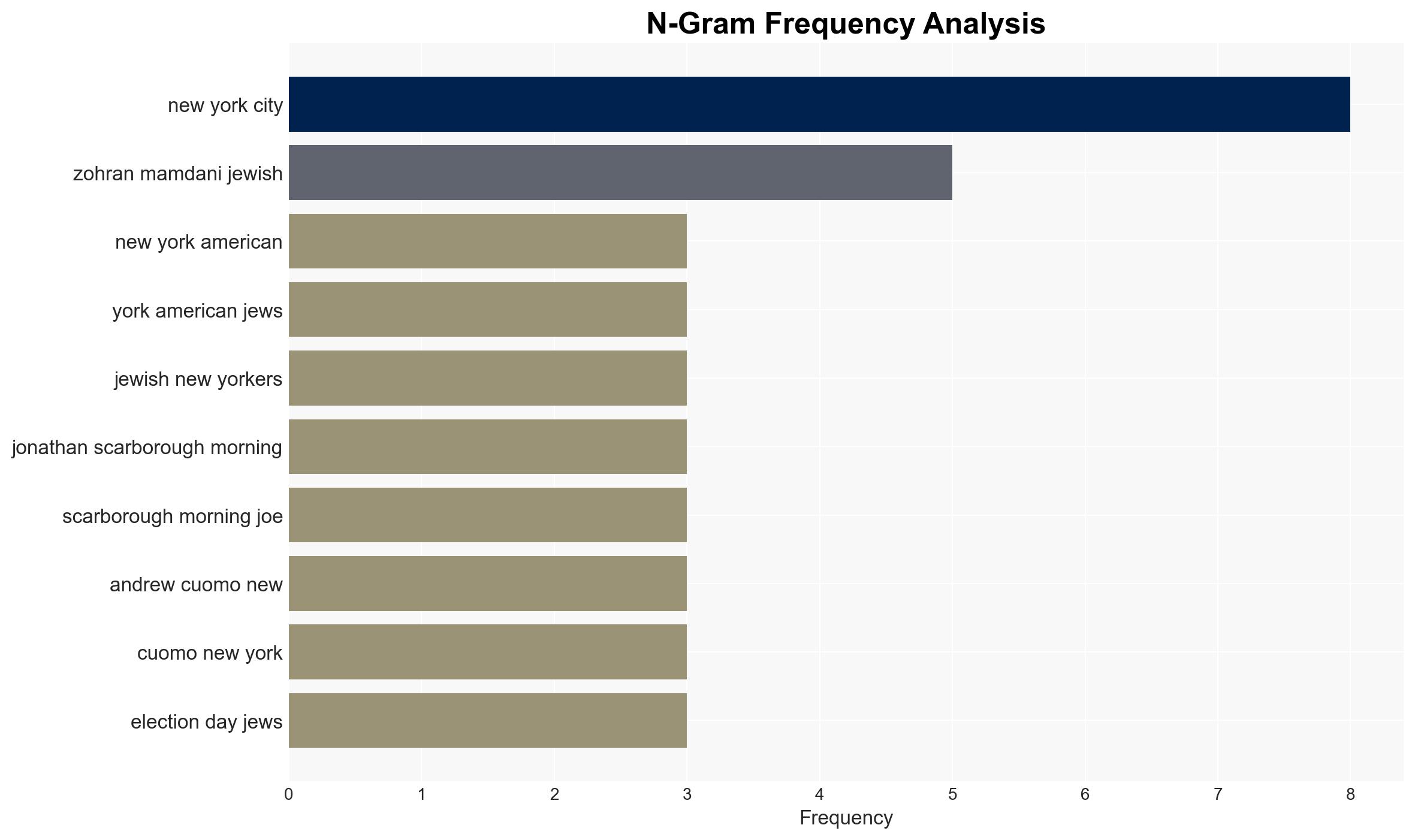The Mamdani Freak-Out – In These Times
Published on: 2025-11-19
AI-powered OSINT brief from verified open sources. Automated NLP signal extraction with human verification. See our Methodology and Why WorldWideWatchers.
Intelligence Report: The Mamdani Freak-Out – Strategic Analysis
1. BLUF (Bottom Line Up Front)
The strategic judgment is that the controversy surrounding Zohran Mamdani’s political stance on antizionism reflects a broader polarization within the Jewish community in New York City, with implications for political alignment and community cohesion. The most supported hypothesis is that this polarization is being exacerbated by external political actors seeking to influence Jewish voter behavior. Confidence Level: Moderate. Recommended action includes fostering dialogue within the community to address underlying issues and mitigate external influence.
2. Competing Hypotheses
Hypothesis 1: The controversy is primarily driven by internal divisions within the Jewish community regarding antizionism and political identity, reflecting a natural evolution of political discourse.
Hypothesis 2: External political actors are deliberately amplifying divisions within the Jewish community to influence electoral outcomes and consolidate power.
Hypothesis 2 is more likely due to the evidence of aggressive campaigning by right-wing Jewish organizations and the strategic use of fearmongering tactics, which suggest a coordinated effort to sway voter behavior.
3. Key Assumptions and Red Flags
Assumptions include the belief that the Jewish community is monolithic in its political views, which is challenged by evidence of diverse opinions. A red flag is the potential for misinformation campaigns to distort the narrative around antizionism. Deception indicators include the use of emotionally charged language and the framing of Mamdani as an existential threat, which may not accurately reflect his political platform.
4. Implications and Strategic Risks
The primary risk is the potential for increased polarization and fragmentation within the Jewish community, leading to weakened political influence and social cohesion. This could escalate into broader political instability if exploited by external actors. Additionally, there is a risk of cyber and informational threats as misinformation campaigns may target this issue to further divide the community.
5. Recommendations and Outlook
- Facilitate open forums and dialogues within the Jewish community to address concerns and foster understanding.
- Monitor and counter misinformation campaigns through fact-checking and transparent communication.
- Engage with community leaders to build resilience against external political influence.
- Best-case scenario: The community unites around shared values, reducing external influence.
- Worst-case scenario: Deepening divisions lead to political fragmentation and reduced influence.
- Most-likely scenario: Continued polarization with periodic external attempts to sway political outcomes.
6. Key Individuals and Entities
Zohran Mamdani, Andrew Cuomo, Rebecca Vilkomerson, Fahd Ahmed, Anti-Defamation League (ADL)
7. Thematic Tags
National Security Threats, Political Polarization, Community Cohesion, Misinformation
Structured Analytic Techniques Applied
- Cognitive Bias Stress Test: Structured challenge to expose and correct biases.
- Bayesian Scenario Modeling: Use probabilistic forecasting for conflict trajectories or escalation likelihood.
- Network Influence Mapping: Map relationships between state and non-state actors for impact estimation.
- Narrative Pattern Analysis: Deconstruct and track propaganda or influence narratives.
Explore more:
National Security Threats Briefs ·
Daily Summary ·
Support us





